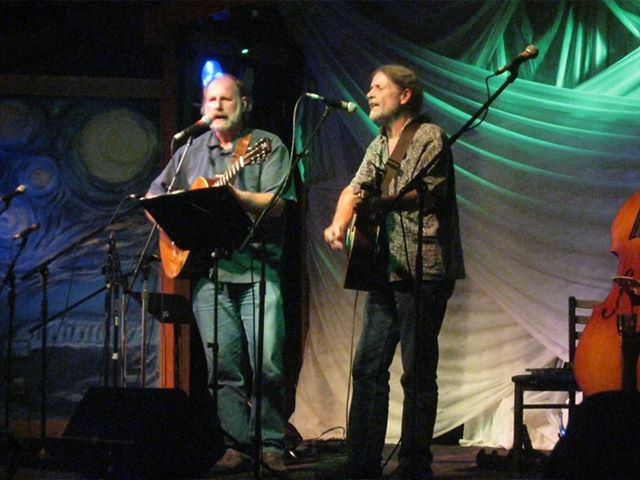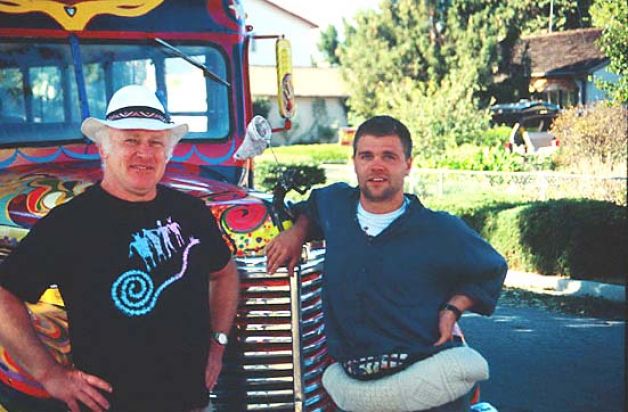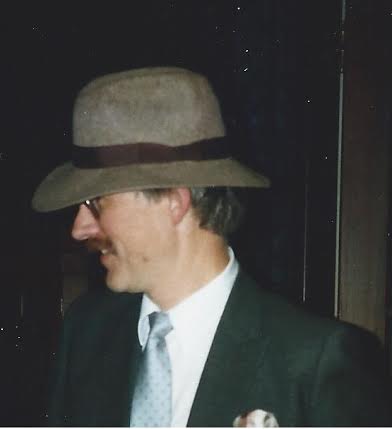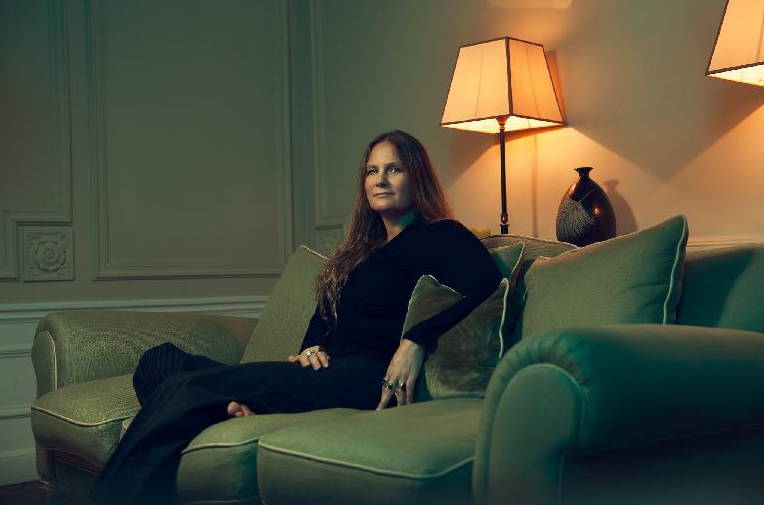During the academic year of 1987-1988, Ken Kesey taught a graduate-level creative writing class of thirteen students at the University of Oregon. He charged the group with producing a full-length novel in one school year, which they did, publishing Caverns under the name O.U. Levon (Novel University of Oregon backwards) in 1990.

It is my intent to interview each living author about the project and what they learned from Kesey.Kenneth Zimmerman’s interview is the third I’ve published. The first was Jeff Forester. James Finley was the second. I outline the project in more detail in my initial posting.
While formatting this interview, I have been listening to Zimmerman’s band Cross Current. You may want to consider listening while you read, because reading about Ken Kesey while listening to a song about Woodie Guthrie has to do something good for your soul.
Zimmerman also sent me the photo of the Caverns authors that appears with this interview. The picture is a Polaroid taken by Pulitzer Prize-winning photographer Brian Lanker during a shoot for Rolling Stone. The Rolling Stone story, along with the chosen photo from that shoot, can be found here.
What is your life like now? Are you still writing?
I’m an English instructor at Lane Community College in Eugene. I’m still writing — poetry, songs, and fiction– though not professionally. I’m working slowly on a novel about white water kayaking, and I’m performing original folk songs in local venues as part of the duo Cross Current.
What do you remember most about the process of writing a book with thirteen other people?
It was truly a lovely chaos. Kesey played the role of bandleader, team coach, and occasionally the little engine that could, pulling us up over the steep hills whenever we got stuck. The class was a full school year long, and each of the three terms was quite different. The Fall term was spent mostly figuring out characters, general plot direction, and a process for working together. Winter term was an amazing outpouring of prose, the first draft of the book was largely written in those three months. The Spring term was mostly an end-to-end re-writing of the novel, smoothing, connecting, and polishing the story. We gave a public reading from the finished book at the end of the school year, and sent it off to Kesey’s agent.
The writing process that finally worked for us was pretty intense. After a lot of flailing and false starts during the Fall term, Kesey came up with a plan. One person would be responsible for plotting out the next chapter of the book in detail, dividing it into 13 chunks of action. Things like “Dr. Jo wakes up, looks out the window, and wonders why she’s on this journey.” or “Loach and his brother talk about the past while painting the windows of the vehicle black.” During a class session, we’d write the descriptions of each “beat of action” on a separate piece of paper, throw them in a hat, and pass the hat around the class. Each of us would draw our assignment for the day, and then, in the next 45 minutes, we’d all write out our section. Right then. In front of everyone. Then we’d read aloud to the class what we had just written, recording the chapter we’d created onto cassette tape. Kesey participated fully in this, and it was amazing to hear the spontaneous prose he would write during those sessions. A friend of Kesey (Barbara Platz) would transcribe the voice recording, and the student responsible for that chapter would have the job of revising the rough draft, smoothing and connecting the 13 pieces into a whole. Once we adopted this process, the main body of the book was written quickly.
Kesey moved to Eugene, into a house he owned near the U of O campus, for the entire year. Our classes were held in the house, and with amazing generosity Kesey opened the house up to us, so that we could come and go as we wanted. He seemed to want us to feel as much like family as students. During the revising process, Kesey spent almost every day in front of his big IBM computer, and all of us students came and went, cramming together into the little computer nook, reading aloud and discussing edits.
Kesey also hosted a number of parties at the house, and it was great as a graduate student to get to meet and hob-nob with some of his high-powered friends. I remember meeting Robert Stone, Barry Lopez, and others, and particularly a wonderful, long evening with Tim Leary and Kesey.

What did you learn from writing Caverns?
It’s hard to say specifically what I learned. Possibly almost everything I know about fiction came from that class. That writing novels is damn hard. That the author always has to sacrifice his or her own desires for the sake of the story. That the best characters will surprise you, taking on a life you didn’t plan for them. That collaborative writing may not be the best way to really achieve a great story, but it can be a lot of fun and a great way to learn. Kesey also taught us that fiction writing is really a bag of tricks, and he shared some of them with us, for example, his method of passing point of view from one character to another in mid-story.
What stands out in your memories of Ken Kesey?
His generosity. His humor. His intelligence and especially his insight into people. His goofy coin tricks. That high pitched laugh. His thick, beefy hands. A constant sense of delight and amusement twinkling in his eye. His love of children. His love of words. His love of life.
How do you feel about the book as a finished product?
I don’t think Caverns is a great novel, by any stretch. But a friend recently read it and told me he thought it was fun and readable. That pretty well sums it up. It’s probably the most unified and readable large group novel ever written. The purpose of the class, of course, was never to write a great book. It was meant to be a learning experience, and that it was.



